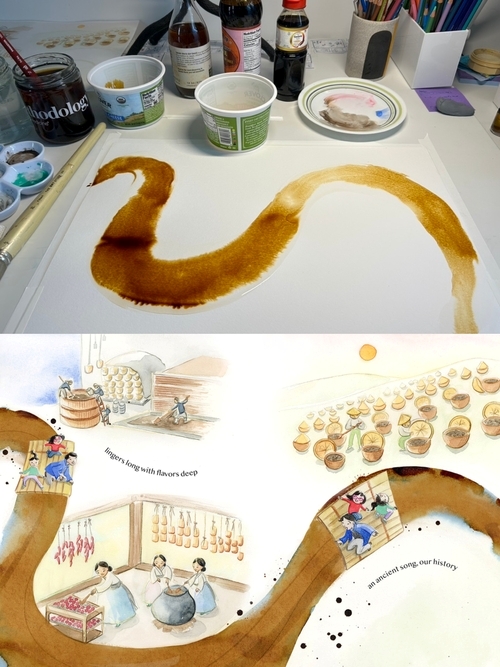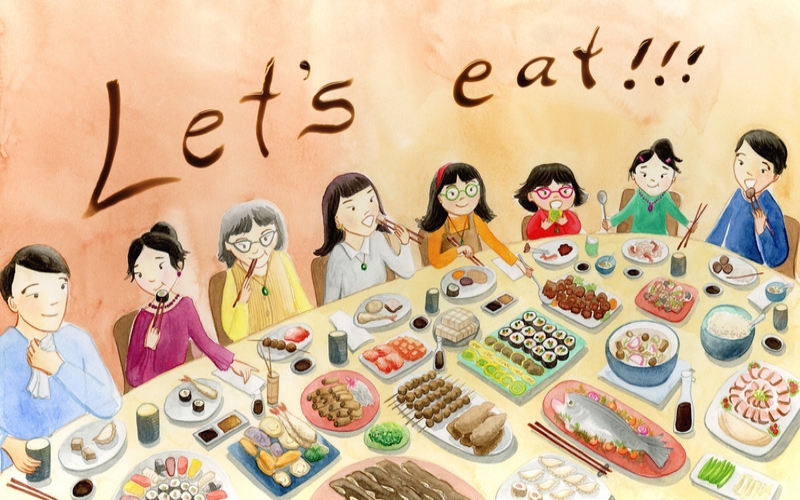- 한국어
- English
- 日本語
- 中文
- العربية
- Español
- Français
- Deutsch
- Pусский
- Tiếng Việt
- Indonesian
By Honorary Reporter Foteini Chatzoudi from Greece
Photos = Laura G. Lee
Laura G. Lee, a second-generation Korean American author and illustrator of children's books, lives in Northern California but was raised in the mountains of West Virginia.
Earning a master's in architectural design from Columbia University and another in interactive design from New York University, Lee is an artist, filmmaker, design researcher and product designer for emerging technologies.
On Jan. 7, she released her latest work "Soy Sauce!" a picture book that honors the seasoning and how food connects family and friends, earning a star from the U.S. book review magazine Kirkus Reviews. She even used real soy sauce (ganjang in Korean) to paint illustrations for her book.
The following are excerpts from an email interview with Lee from Feb. 4 to March 3.

Laura G. Lee used soy sauce in her illustrations for "Soy Sauce!"
What inspired you to write "Soy Sauce!" and how did you develop its themes?
My inspiration came while researching Korean cuisine, particularly the work of ganjang master Ki Soon-do in Jeollanam-do Province. The complex history of the sauce like its cultural exchanges and global influence made me realize that it deserved its own story. As a Korean American growing up in the 1980s, this project was a way to explore my ethnic identity while showing how soy sauce connects cultures.
What challenges did you face when using soy sauce as paint in your illustrations?
While exploring soy sauce's dimensions, I discovered a "flavor and aroma" wheel that inspired me to experiment with soy sauce as a painting medium. But working with the sauce presented unique challenges.
It's highly acidic, sticky and dries very slowly. Finding the right balance was crucial, as too much means a painting won't dry even after two years. Despite these challenges, the process added an authentic dimension to the story.

This scene from "Soy Sauce!" shows a shared table filled with foods from Korea, Japan and China.
How does your book show differences in cultural traditions of soy sauce making?
Each culture has its unique approach to soy sauce making. In Korea, we use domestic ingredients like jujube and chili and shape soybeans into meju (fermented soybean lumps) that ferment naturally in the sun. Ganjang differs from Japanese versions by not using wheat and including charcoal for purification. Distinct methods reflect each culture's resources and traditions.
How has ganjang influenced your connection to Korean culture?
Growing up in West Virginia, far from Korean communities, soy sauce was our constant connection to Hansik (traditional cuisine). It was the one Asian ingredient readily available at American grocery stores, allowing my mother to recreate Korean dishes and modify Western recipes. It became a bridge between our Korean heritage and American life.
What impact do you hope your book has?
I hope to spark curiosity about this everyday ingredient that connects so many cultures, and that it encourages children to explore their own cultural histories and appreciate how food brings people together.
msjeon22@korea.kr
*This article is written by a Korea.net Honorary Reporter. Our group of Honorary Reporters are from all around the world, and they share with Korea.net their love and passion for all things Korean.
Most popular
- Grammy-winning producer calls Suga of BTS 'amazing artist'
- 'Universal love, family' themes fuel success of 'King of Kings': director
- Council sets minimum hourly wage in 2026 at KRW 10,320
- Expansion of foreign app system raises tourist convenience
- Nat'l population diversity rose nearly 8% from 2018-22: study
